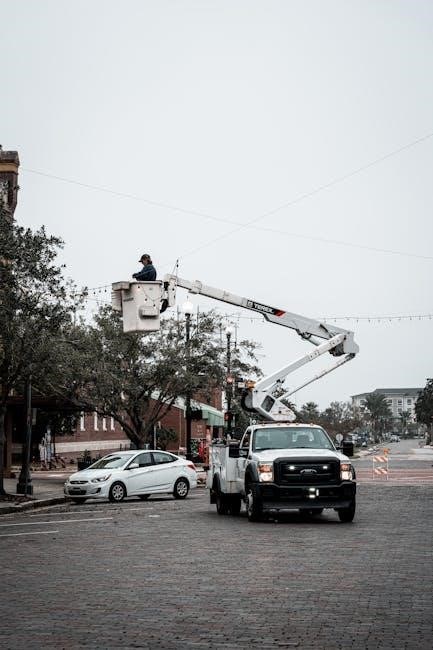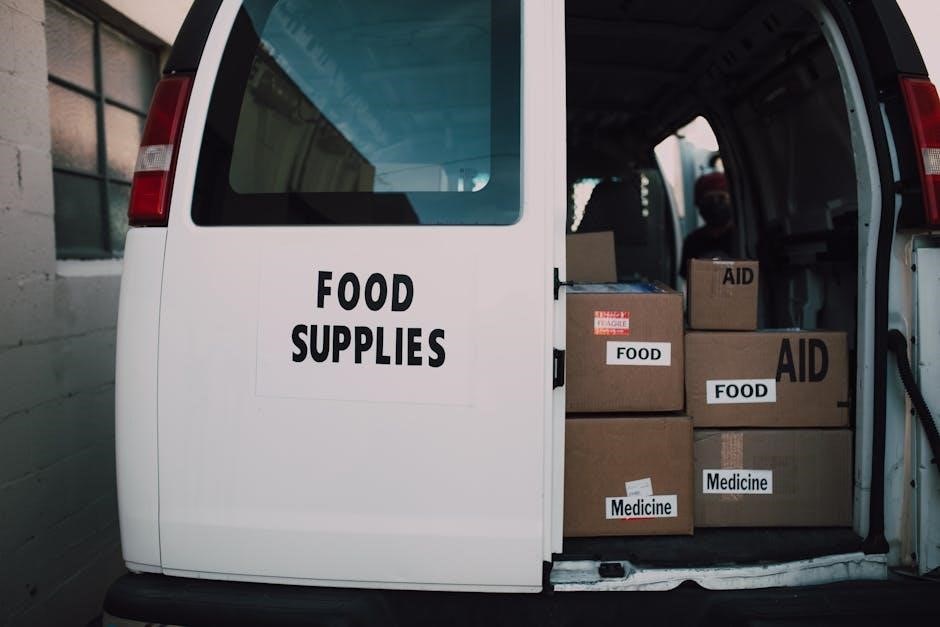graco snugride click connect 35 lx manual
Graco SnugRide Click Connect 35 LX Manual: A Comprehensive Guide
Welcome! This guide provides a complete overview of the Graco SnugRide Click Connect 35 LX infant car seat. Designed for infants up to 35 lbs and 32 inches, it offers secure installation options using vehicle seat belts or LATCH. The Click Connect system allows easy attachment to Graco strollers.
The Graco SnugRide Click Connect 35 LX is a popular infant car seat designed with safety, convenience, and comfort in mind. This rear-facing car seat is engineered to protect infants from birth up to 35 pounds and 32 inches in height, making it an ideal choice for new parents. Its compatibility with Graco’s Click Connect system allows for seamless transitions between the car and compatible Graco strollers, creating a versatile travel system.
This car seat offers secure installation options, accommodating both vehicle seat belts and the LATCH system, providing flexibility for various car models. The adjustable head support, harness straps, and reclining base ensure optimal comfort and safety for your growing child. The SnugRide Click Connect 35 LX prioritizes ease of use, featuring a user-friendly design that simplifies installation and adjustments.
Understanding the features and proper usage of your car seat is crucial for ensuring your child’s safety. This comprehensive guide will walk you through all aspects of the Graco SnugRide Click Connect 35 LX, from installation to cleaning, helping you make the most of this essential piece of baby gear.
Key Features and Specifications
The Graco SnugRide Click Connect 35 LX boasts several key features designed for safety, convenience, and comfort. First and foremost, it’s a rear-facing car seat suitable for infants weighing 4-35 pounds and up to 32 inches tall. Its Click Connect technology ensures a secure, one-step attachment to all Graco Click Connect strollers, making it easy to create a custom travel system.
Safety features include a 5-point harness that provides a secure fit, and EPS energy-absorbing foam for impact energy management. The car seat is rigorously crash-tested to meet or exceed US safety standards. For added comfort, it features an adjustable head support and a removable infant head and body support.
Installation is simplified with the included LATCH system and a level indicator to ensure proper base angle. The lightweight design makes it easy to carry, and the rotating canopy provides shade from the sun. The seat pad is machine-washable for easy cleaning. Specifications include the car seat’s weight (around 7.5 lbs without the base), dimensions, and materials used in construction.
Safety Warnings and Precautions
Prioritizing your child’s safety is paramount when using the Graco SnugRide Click Connect 35 LX. Always read and understand the complete instruction manual before installation and use. Never use this car seat until you have thoroughly familiarized yourself with its features and safety guidelines. Failure to properly use this child restraint increases the risk of serious injury or death in a sudden stop or crash.
This car seat is designed for rear-facing use only and should never be placed in the front seat of a vehicle with an active airbag. Airbags can cause severe injury or death to a child in a car seat. Ensure the car seat is securely installed using either the vehicle’s seat belt system or the LATCH connectors. Always double-check the installation before each use.
Never leave your child unattended in the car seat. Regularly inspect the car seat for any signs of damage or wear. Replace the car seat immediately if it has been involved in a crash, even if there is no visible damage. Be aware of the temperature inside the vehicle; extreme heat or cold can be dangerous for your child. Follow all manufacturer’s instructions and warnings to ensure your child’s safety.
Installation Instructions: With Base
To install the Graco SnugRide Click Connect 35 LX with the base, begin by positioning the base on the vehicle seat, ensuring it faces the rear of the car. Consult your vehicle’s owner’s manual to identify the appropriate seating position and any specific instructions regarding car seat installation. Adjust the base’s recline angle to ensure the car seat is at the correct level for your child’s safety.
Next, thread the vehicle’s seat belt through the designated belt path on the base. Ensure the seat belt is not twisted and is securely locked. Tighten the seat belt as much as possible, using your body weight if needed, to eliminate any slack. If your vehicle is equipped with LATCH connectors, you can use them instead of the seat belt. Attach the LATCH connectors to the corresponding anchors in your vehicle.

Once the base is securely installed, align the car seat with the base and click it into place. You should hear an audible “click” to confirm that the car seat is properly attached. Always double-check the connection by attempting to lift the car seat from the base. If it is securely locked, the installation is complete. Refer to the manual for visual aids and specific instructions related to your vehicle type.
Installation Instructions: Without Base
Installing the Graco SnugRide Click Connect 35 LX without the base requires careful attention to ensure your child’s safety. Start by placing the car seat rear-facing on an approved vehicle seat. Refer to your vehicle’s owner’s manual for guidance on suitable seating positions and any specific instructions related to car seat installation. The car seat should never be installed in a seat with an active airbag.
Next, thread the vehicle’s seat belt through the appropriate belt path located on the car seat. The belt path is typically indicated by color-coded guides. Ensure the seat belt is not twisted and is lying flat. Buckle the seat belt and pull it tight, removing any slack. Engage the car seat’s lock-off mechanism, if available, to prevent the seat belt from loosening over time. If your vehicle has a locking latchplate, use it to secure the seat belt.
Once the seat belt is securely fastened, push down firmly on the car seat near the belt path while simultaneously tightening the seat belt. This will help to ensure a snug fit. The car seat should not move more than one inch in any direction when tested at the belt path. Always double-check the installation and consult the car seat manual for detailed diagrams and instructions specific to your vehicle.
Using LATCH System
The LATCH (Lower Anchors and Tethers for CHildren) system provides an alternative method to install the Graco SnugRide Click Connect 35 LX car seat, offering convenience and potentially a more secure fit. Before using LATCH, consult both your vehicle’s owner’s manual and the car seat manual to confirm compatibility and understand any weight restrictions.
Locate the lower anchor points in your vehicle’s designated seating position. These anchors are typically found where the seat cushion meets the seat back. Attach the LATCH connectors from the car seat to the vehicle’s lower anchors, ensuring they click securely into place. Tighten the LATCH strap to remove any slack, pushing down on the car seat near the LATCH path as you tighten.
Check for proper installation by grasping the car seat near the LATCH path and attempting to move it side to side and front to back. The car seat should not move more than one inch in any direction. If excessive movement is detected, re-tighten the LATCH strap or consult your vehicle’s owner’s manual for further guidance. Some vehicles also have a top tether anchor, which should be used if available to further stabilize the car seat.
Harness Adjustment and Proper Fit
Ensuring the harness is properly adjusted is crucial for your child’s safety when using the Graco SnugRide Click Connect 35 LX. The harness should be snug, fitting closely to your child’s body without being too tight. Before each ride, check the harness to ensure it is correctly positioned and adjusted.
To adjust the harness height, locate the harness slots at the back of the car seat. The harness straps should be positioned at or slightly below your child’s shoulders when rear-facing. If the straps are too high or too low, rethread them through the appropriate slots. The harness straps should lie flat and not be twisted.
To tighten the harness, pull the harness adjustment strap located at the front of the car seat. Continue pulling until the harness is snug against your child’s chest. To loosen the harness, push the harness release button and gently pull the harness straps outward. The chest clip should be positioned at armpit level. Perform the pinch test: if you can pinch excess webbing at the shoulder, tighten the harness further.
Cleaning and Maintenance
Maintaining the cleanliness of your Graco SnugRide Click Connect 35 LX car seat is essential for hygiene and longevity. Regular cleaning helps prevent the build-up of dirt, spills, and other messes. Before cleaning, always refer to the care label attached to the seat pad for specific instructions.
To clean the seat pad, it is generally safe to machine wash it in cold water on a delicate cycle. Tumble dry on low heat for a short duration. For the car seat shell, use a damp cloth and mild soap to wipe down the surfaces. Avoid using harsh chemicals, bleach, or solvents, as these can damage the materials and compromise the safety of the car seat.
Periodically inspect the harness straps for any signs of wear or damage. If necessary, spot clean them with a damp cloth and mild soap. Ensure the harness straps are completely dry before reinstalling them. Do not lubricate or alter any part of the harness system. To clean the head support pad, unfasten the snaps and follow the care instructions on the label.

Compatibility with Graco Click Connect Strollers
The Graco SnugRide Click Connect 35 LX car seat is designed with the Click Connect system, ensuring seamless integration with compatible Graco strollers. This feature allows for easy and secure transitions from car to stroller, simplifying travel with your infant. To determine compatibility, look for the Click Connect logo on both the car seat and the stroller.
When attaching the car seat to a compatible Graco stroller, refer to the stroller’s owner’s manual for specific instructions. Typically, the car seat will click securely into the stroller frame, providing a safe and convenient travel system. Never force the car seat onto the stroller if it doesn’t easily connect.

Using a Graco infant restraint with other manufacturers strollers may result in serious injury or death. Always ensure that both the car seat and stroller are Graco products and that they are specifically designed to work together. This compatibility feature makes the Graco SnugRide Click Connect 35 LX a versatile choice for parents on the go.
Troubleshooting Common Issues
Even with careful use, you might encounter some common issues with your Graco SnugRide Click Connect 35 LX. One frequent concern is difficulty with the Click Connect system when attaching the car seat to the base or stroller. Ensure that both components are aligned correctly and that no obstructions are present. A firm, even pressure should allow for a secure click.
Another potential problem is harness adjustment. If the harness straps are too tight or too loose, re-thread them according to the instructions in the manual. Make sure the harness is snug against your child’s shoulders but allows for comfortable movement. Difficulty cleaning the seat pad is also a common issue. Always follow the cleaning instructions in the manual, using mild soap and water. Avoid harsh chemicals that could damage the fabric.

If you experience persistent issues, such as difficulty with LATCH installation or a malfunctioning harness, consult the Graco customer support team for assistance. They can provide specific guidance and help resolve more complex problems.
Contacting Graco Customer Support
When facing challenges with your Graco SnugRide Click Connect 35 LX that you can’t resolve through troubleshooting, contacting Graco customer support is your next best step. Graco offers various channels for assistance, ensuring you can find the help you need efficiently. Before reaching out, gather essential information such as the model number of your car seat and a detailed description of the issue you’re experiencing. This will help the support team understand your situation quickly.
You can typically find Graco’s customer support phone number on their website or in the product manual. Calling them allows for real-time interaction and immediate clarification. Additionally, Graco’s website often features a comprehensive FAQ section addressing common questions and concerns.
For less urgent matters, consider using Graco’s online contact form or email support. This allows you to provide detailed information and receive a response within a reasonable timeframe. Remember to be patient and polite when communicating with the support team; they are there to assist you in resolving any issues you encounter.
Finding the Manual Online and Offline
Accessing the Graco SnugRide Click Connect 35 LX manual is crucial for safe and proper usage. Fortunately, Graco provides multiple avenues for obtaining this essential document, both online and offline. The most convenient way is often through Graco’s official website. Navigate to the “Support” or “Product Manuals” section and search for your specific car seat model. You’ll typically find a downloadable PDF version of the manual, allowing you to view it on your computer, tablet, or smartphone.
If you prefer a physical copy, check the packaging of your car seat upon purchase. Many Graco products include a printed manual stored in a designated compartment, often at the back of the car seat. If you’ve misplaced the original manual, you can contact Graco customer support to request a replacement. They may be able to mail you a physical copy, ensuring you have a tangible reference guide.
Additionally, online retailers that sell the Graco SnugRide Click Connect 35 LX may also provide a link to the manual on the product page. Exploring these various options will ensure you have access to the information you need to use your car seat safely and effectively.





